Daria Kravchuk
Curator and art manager with an MA degree in Curatorial Studies from Smolny college, St.Petersburg, and an MA in Museological Studies from Amsterdam University. Working on art related projects worldwide. Recent curatorial practice focuses on the topic of re-framing museum collections, rethinking «the everyday», researching projects, which are conceptual, interventionist, contextual, socially engaged and locally involved.
Daria currently works as a curator in .ART company. .ART domain zone provides relevant web products to help creative individuals and art organizations become visible in the online space.
Dedicated to support culture in a variety of forms, .ART empowers members of the artistic community to make strong statements in the online space.
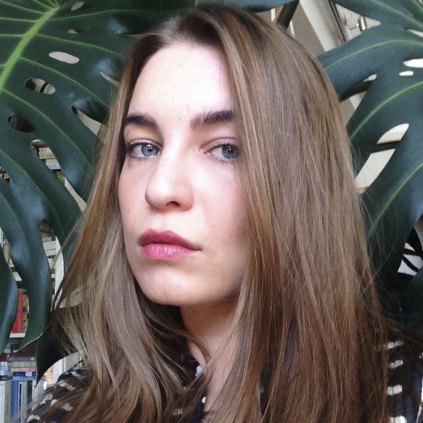
Works

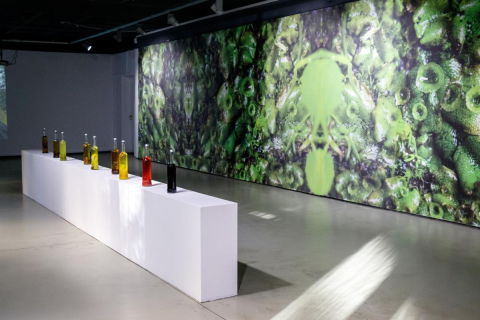
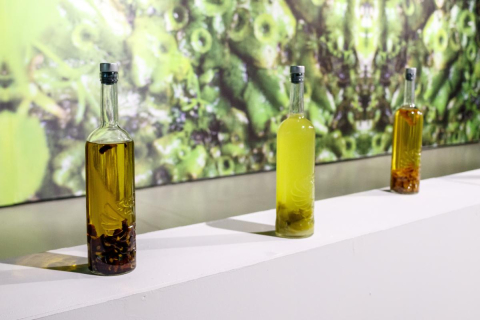

EXCEPTS FROM CORRESPONDENCE WITH FRIENDS
Installation view PERESVETOV PEREULOK GALLERY 2018Exhibition Excerpts From Correspondence With Friends by the Russian artist Anastasia Potemkina’s was opened in the gallery Peresvetov Pereulok in Moscow. It presented the continuation of the artistic research, which Potemkina began in the Triumph gallery in Moscow in September 2016 (exhibition Bad Seed Renaissance), and continued in Pavilleon in Zurich in October 2016.
Anastasia Potemkina works with a variety of means of conveying the image: from drawing and photography to stage performance with actors and sound installations. In her artistic practice one of the important areas of research is associated with wild urban plants which interest the artist from the sociological point of view – as a projection of a marginal part of society which is not protected by any social guarantees, which literally exists on the sidelines, outside the class structure.
The city is a natural reservoir for a multitude of biological species competing for a living space in which they parasitize and reincarnate, and some become oppressed. Ruderal flora symbolizes various oppressed species: women, ethnic and social minorities. The new edem, created by the artist, is a place without hierarchies, a place dominated by matriarchy and a new urban ecology. The main formula of this post-apocalyptic space is “ecology instead of politics and biology instead of religion.”



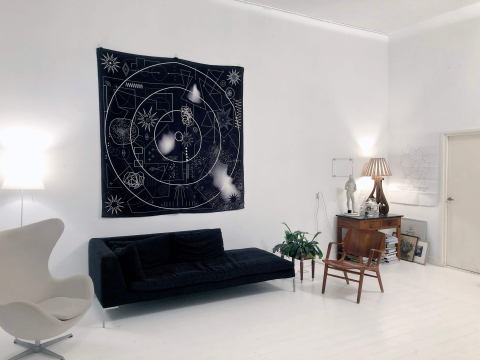
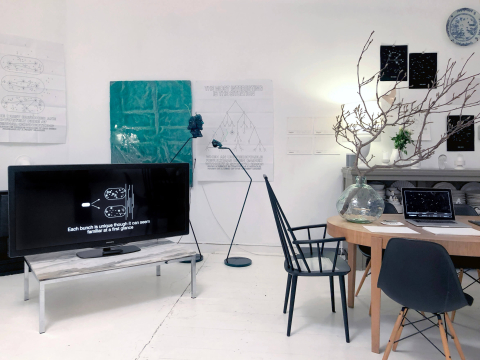
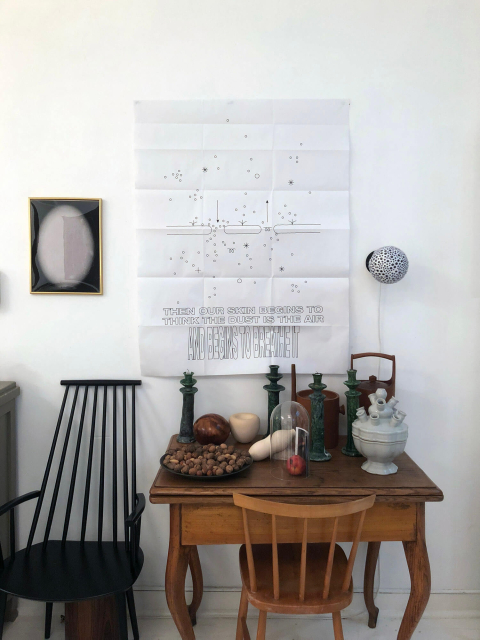
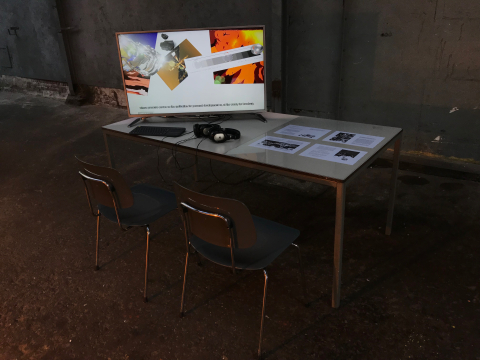
First Person
Amsterdam 2017First Person presents the work of eight Russian artists, born in the last decade of the Soviet Union and grown up in post-soviet space. Their practice consists of different media, from video-art to installation, performance and post-internet art.
The exhibition took place on three locations in Amsterdam: a gallery space in
the center, close to central station; an old factory hall in the North of the city; in public space, on the ferry connecting the two parts of the city and the exhibition.
After the narrative “I” comes the experiential first-person perspective.
In addition to how I experience the world and what other things are for me, First Person shows the first-person perspective isn’t necessarily human: everything has a say from its particular point of view on the world. Just like you and I, mushrooms, countries, pigeons, stones, cows, mountains, computer programs, nettles, dogs, cats, mice etc. have their own way of experiencing what is around them.
But aren’t we experiencing the experience of other things and thus again talking about our experience? -Yes, you are limited by your own experience and will never know what it is like to be something or someone else. However, by recognizing different points of view, we can develop some understanding of what it is like.
In the exhibition, this pluralization of perspectives unfolds on different levels. By presenting eight Russian artists, whose work has never been shown in the Netherlands, visitors will be able to (1) broaden the often narrow perspective on Russia and (2) on its art. Next to shining a different light on a country, which mostly gets its stereotypes confirmed in Dutch and other Western media, the works inside the exhibition stress different points of view as well. By exploring how other entities encounter the world, the artists show (3) the unsustainability of the privilege of not only the Western perspective, but of the human perspective in general.

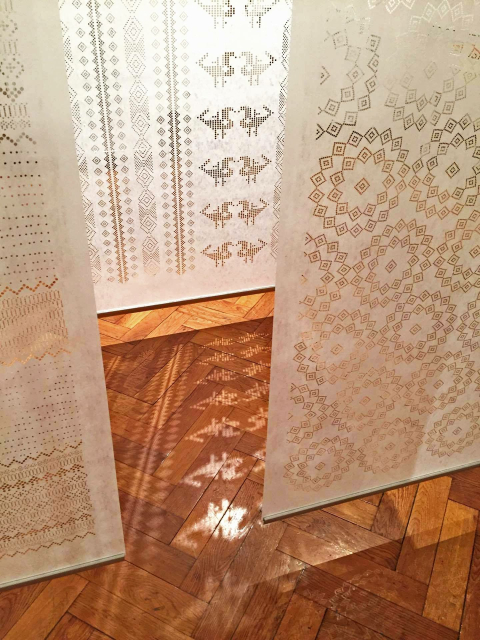
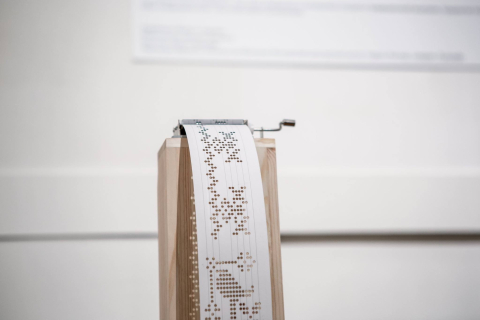


Soundweaving
For her SoundWeaving project, Jeanette Szirmay used a laser-cutting machine to create holes along lengths of fabric, forming patterns that mimic old textile motifs from parts of eastern Europe.
The strips of material serve as bands for the music box, translating the patterns into melodies. The punchcards are forced past the 20 teeth of a comb inside the metal music box using a series of cogwheels and a manual crank. When each tooth is caught and released by a corresponding hole, it creates a different musical note.
“Soundweaving adds another dimension to traditional embroidery, activating multiple senses and inspiring visitors to interact since anybody to visit the exhibition can try it for themselves,” said the designer.
Punch cards are already used in weaving machines to program patterns in the same way that they are used in musical instruments, such as barrel organs, to produce music. It was this connection that inspired the project.
“While I was working in the weaving workshop, I became intensely fascinated by the punchcards and their use in weaving machines,” mentioned Szirmay. “I recalled that barrel organs with punched tapes in my childhood worked by the same principle.”
Looking at cross-stitching as a pattern of pixels, Szirmay assigned a note on a musical score to each stitch, manually punching patterns from traditional folk costume bodices or the ends of pillows through the paper and fabric cards.
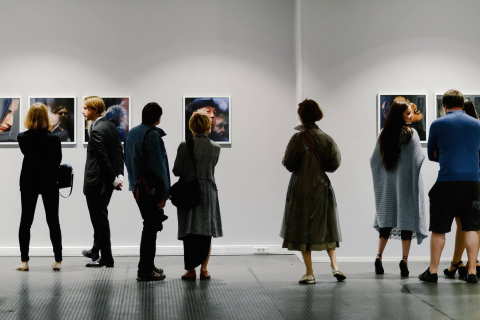
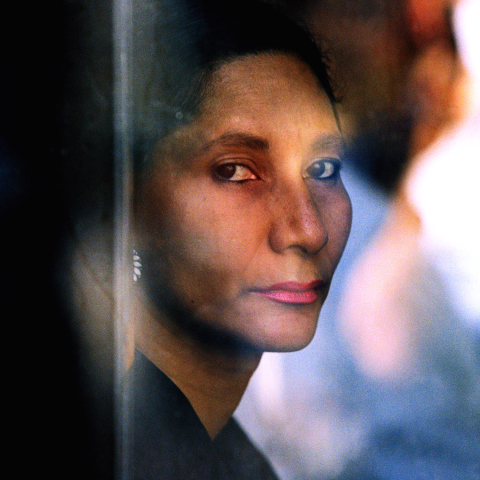
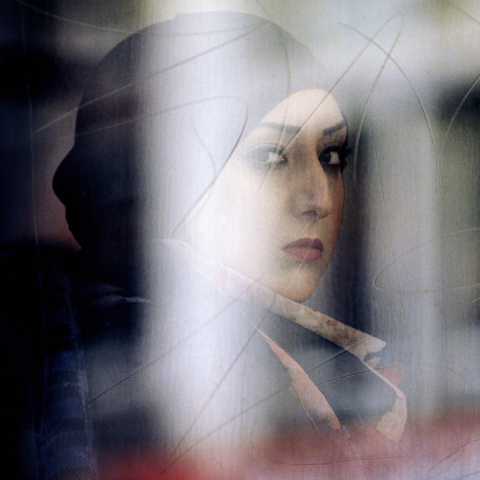

Face to Face
2017Six consecutive years Menno Otten stood at one and the same place on the busiest square of his mother city to look and see. Tucked into the anonymous, rushed crowds, he captured people, strangers, always sitting behind the same window of the trams coming and going. What was he looking for?
Fascinated by the smallest details, Otten photographs so close that it feels as if we can touch the people in the photos; it seems like the photographer perceives with his fingertips. At the same time these people are untouchable, far away, disappeared within themselves, and yet he is after the utmost intimacy, like a lover who for the fist time watches his beloved awaken, quietly holding his breath. It is a paradoxical site: at the nosiest point of the city somebody catches the deepest solitary silence.
Time and again it is about the same thing: a glance; a moment when someone is turned within himself, or looking up from his or her inner zone. Otten captures people at a time when they are finally offline: escaped from the omnipresent, ubiquitous digital burden they are often subjected to. Escaped from their own eyes as well.
It seems as if Otten is doing the same with his photos as those who are photographed: thinking the world away; withdrawing the image; leaving the viewer with only the essential.
However, the world is always present within the frame as the people within the photos are hidden behind two, sometimes three layers of glass that reflects the typical Dutch Light. Between the viewer and the photographed these layers, screens and veils can be discovered revealing the seasons that have passed over the years. The seasons literally manifest on the windows as the raindrops reveal the contours of a face; snowflakes are stuck in the hair of an old woman; sunrays caressing the shoulder of a young girl.
Unlike his internationally acclaimed video work Otten literarily freezes time with his photography as his loving camera captures the most volatile thing there is – a glance that touches him: the eyes of another. Everyone raises his or her own eyes, is in his or her own unique zone – yet it’s as if the people in these forty selected photos for this exhibition cast one and the same glance. Even though you can lose yourself in each individual face – together they form a chorus of silence.
At a time when people are plagued by the violence of looking and being looked at; at time they are constantly taking selfies and are constantly aware of the omnipresent cameras; in this desert of image coercion, Menno Otten’s photography is, in an almost mystical urgency, consistently searching for an oasis of internalization.
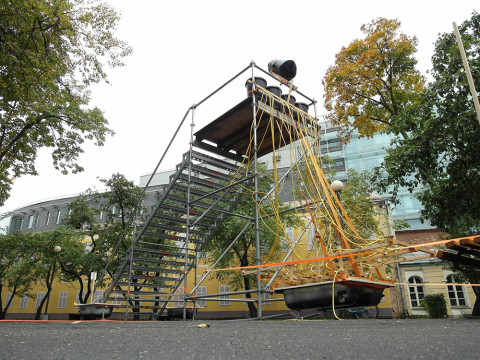
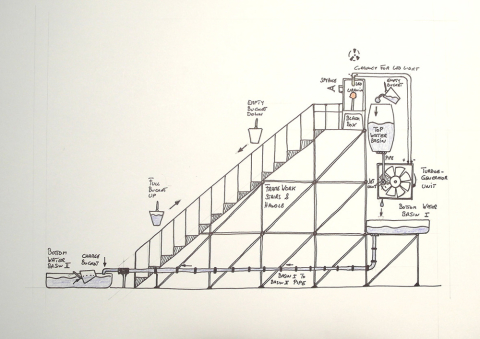
KRFTWRK
MUSEUM OF DECORATIVE AND APPLIED ARTS, 2013Following the successful co-operation between the BMUKK and the Cultural Forum in Moscow during the
4th Moscow Biennale in 2011, this is another joint venture as part of the 5th Moscow Biennale. KRFTWRK Moscow is a cross-media project incorporating installation, architecture, digital media and the visual arts. The installation is designed to represent a storage power plant operated by people.
A common theme running through the works of Rainer Prohaska is his passion for experimenting with processes of everyday life. His creative output showcases processes in which there is now a deficit of passion and attention on the part of the people involved. In recent years these hands-on, interactive works addressing processes such as cooking, mobility or the erection of edifices have been on show in Toronto (Luminato Festival), Los Angeles (MAK-Center), Beijing, Seoul, New Delhi, New York and Vienna. His work method rarely comprises the quality of a finished and definitive state; rather, the fun and pleasure of reaching that state, combined with the positive achievements of the change itself.
Besides a current topical focus on the implementation of architecture performances, there is a series dedicated to energy generation and wastefulness in industrial countries and threshold countries.
For the Moscow Biennale 2013 Prohaska has created an installation ironically and playfully dedicated to this theme as part of the KRFTWRK series. It is a technical installation in which water has to be pumped up into an elevated tank by the public. The liquid inside the elevated tank becomes stored energy that is regularly drained in order to drive a turbine connected to a generator. With the electricity produced by the generator the installation illuminates itself, which means that if the visitors choose not to participate, the work itself remains barely visible.
The pleasure of experimenting, of developing technical possibilities and, above all, of involving visitors in the artistic output are all aspects of the common theme running through the work of Austrian artist Rainer Prohaska. His concept of picking up on processes of everyday life, transforming them, and presenting them as altered reality in performances and visual works is elementary; they are regularly showcased in his works for the Toy Kit Architectures, cooking performances and cross-media projects.
Rainer Prohaska creates artistic settings for a social exchange, but more importantly his aim is to convey a physically palpable and visible aesthetic experience. The process itself is elementary, less so the fast, finished ‘product’.
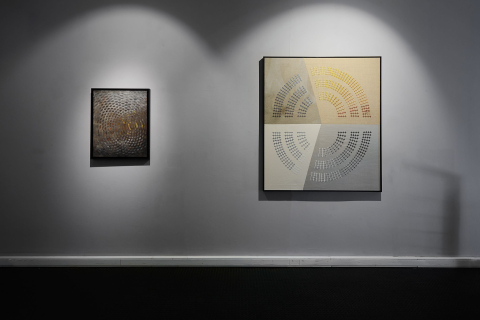



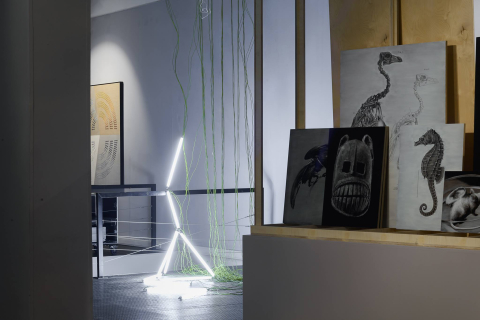
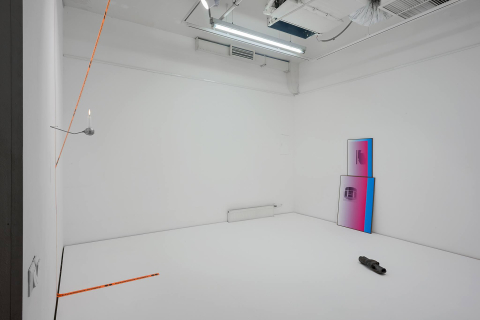
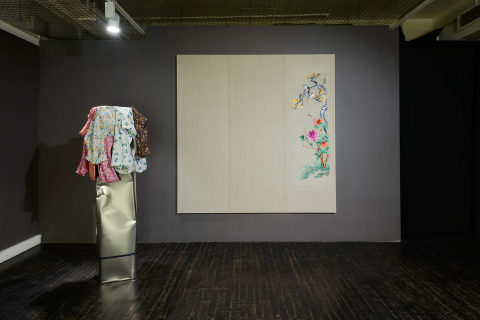


EXTENSION.NL. MODEL OF CONSENSUS
2018Triumph GalleryNetherlandsQuestions about cultural identity and normative ‘national’ values are becoming an issue in political and cultural debate in the Netherlands nowadays. More and more artists are looking at art as at the mean which can provide alternative ways of contemplating contemporary society.
Lots of Dutch artists tend to put their ideas of national identity under pressure and to examine and challenge the processes of inclusion and exclusion in the Netherlands today. As questions of cultural identity and national values become even more of an issue in cultural sphere, the concept behind Extension.nl. Model for Consensus exhibition is to move the agenda of multiculturalism from notions of toleration and difference towards building a shared but agonistic democracy on a cultural level through the use of one of the few remaining public sphere institutions left to us, the art institution. In our case – Triumph gallery, which is one of the most active institutions on the Russian art scene, collaborating with numerous museums, supporting emerging artists and working on research based exhibition projects.
Extension.nl. Model for Consensus reflects the scattered worldview and our intention to bring together the multitude of voices of Dutch artists. Talking about consensus is a national Dutch phenomenon, which is a perfect starting point for bringing these ten transmitters, ten artists representing contemporary Dutch art scene, together. The more creative the artists are — the more self-valorizing — the more surplus of knowledge this multitude of voices can bring to the community at large.
Extension.nl. Model for Consensus exhibition presents ten contemporary Dutch artists, who work in different media, from painting and video to objects and installations, within the EXTENSION program in Triumph gallery, which is always focused on anthropological
research into contemporary art as part of the projects of the Department of Research Arts. EXTENSION is a project based on the idea of applying socio-anthropological approach in order to examine the reasons – historical, political, demographical – which led to the development and current state of the art scene in this case in the Netherlands, being primarily linked to Russia by a certain commonality of a number of factors – fragments of shared history and longstanding mutual cultural attraction.
What does the notion of being Dutch and being Dutch artist mean nowadays? What does national identity mean in a time of global migration? What are the narratives, which help the artists to search for the phenomena of activation and reframing of the iconic images and the research for such category as, for example, silence?
Dutch artists have a tendency to address art historical tradition and to create new readings of the media, such as painting and photography. Formal experiments of neoplasticism, arte povera and conceptualism became the basis for the artworks by Wouter Paijmans, who creates works at the junction of painting and installation. Navid Nuur, whose works are strongly influenced by the conceptualists from the 60s, has paid more attention to the relationship between meaning and form. Frank Ammerlaan works with such medias as sculpture, photography and video, but the picture remains central theme of his research. In order to create his work, he comes into position of an alchemist and experiments on the surface of the canvas with materials such as dust, metal particles and meteorite chips. The artistic method of Nick Hendrix is to rethink famous works of art and to replicate them in media images. By placing them in a new context, by changing the technique of writing, size, and translating colors into the black and white palette, Hendrix gives them a new meaning. Maaike Schoorel creates her pictures from photographs, contrasting them by using the finest tonal transitions. It no longer refers to the visual or intellectual experience of the viewer, but to ones immediate perception. Saskia van Imhoff is one of the most intriguing contemporary representatives of institutional critique, a direction in the arts, which primarily focuses on a critical examination of museum practices. It is comparable to the approach of an archaeologist who constantly removes layers in order to discover deeper meanings, revealing unexpected objects and fragments of knowledge that can be used to create new narratives. Jennifer Tee is positioning herself as a quasi-anthropologist. In her sculptures, installations, performances and collages, she builds connection between esoteric ideas and the nature of the objects themselves. She often uses artifacts and symbols charged with certain connotations, drawing inspiration from a variety of sources and trying to build a dialogue between Eastern philosophy and Western culture.
Sarah Van Sonsbeeck creates site-specific installations devoted to identity issues: on one hand, she tries to identify, protect and expand personal space; on the other – she reveals the impossibility and even the undesirability of a complete disconnection from the world. She is engaged in the architecture of intangible concepts, which in the end creates space for new consensus in art, and, therefore, in society. The main motives in the works of Guido van der Verve are endurance and extreme situations, presented, however, in a poetic way.
The works included in the exhibition are related to the in-between state, contemplations of life’s fragile connections, research of contemporary life with its cross-cultural identity and narratives, utopian concepts and the new periphery of our world view, institutional critique and reframing of the iconic images, intuitive interpretations, interaction between presence and absence, flying and falling, appearing and disappearing. In each work, it is possible to discern traces of focused work and intense, profound thought.
For this exhibition our organizing thesis was the following: the field of art is a unique lens through which one can examine the forms and concepts underpinning current moods of the society and most actual questions. Art and its supporting institutions embody a central contradiction: a space where a sustained critique of ideology is itself highly ideological. Animating the ideological apparatus of the art world is the heritage of a transgressive bohemian culture which propagandizes that modern art is precisely the place where rules as such should not apply.
The central question we posed to ourselves was: what does art tell us about freedom and the desire and need for transgression, which are prerequisites of that freedom but also, at the end of the day, produce the very lawlessness that facilitates the abuse of power?
We were researching the existence of specific concepts, currents, modalities, which can be taken from the art world that we are all a part of that could provide a bridge to cross in order to diagnose how it is that we arrived at this point. And by exploring some very core concepts in artistic discourse – freedom, rule-breaking, autonomy, power – we have arrived to the Model for Consensus.